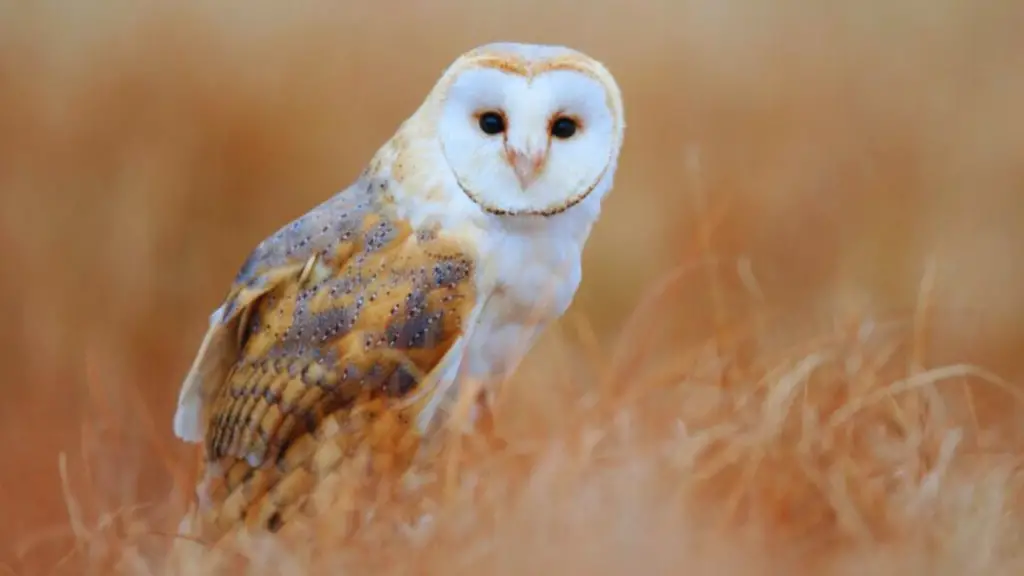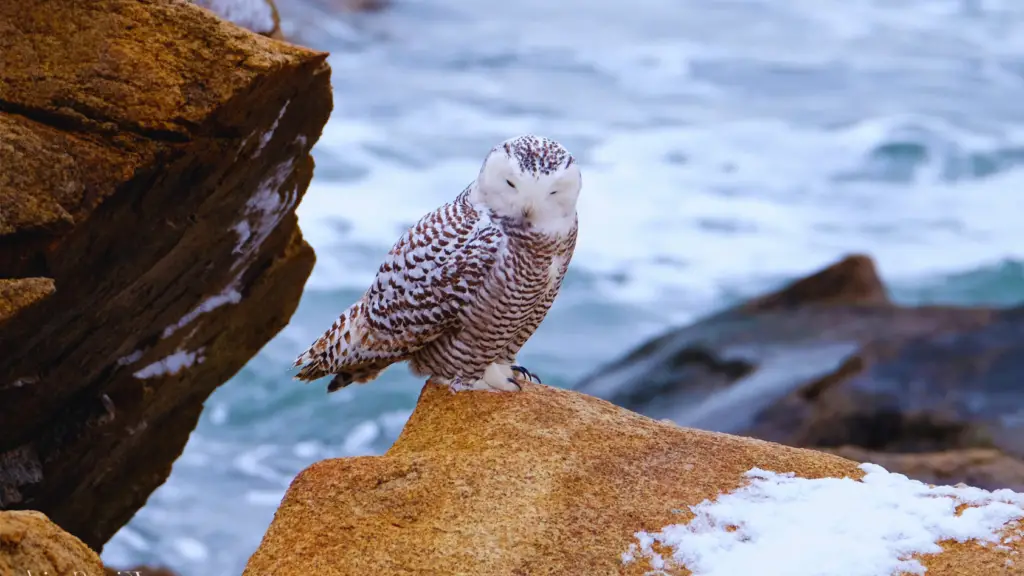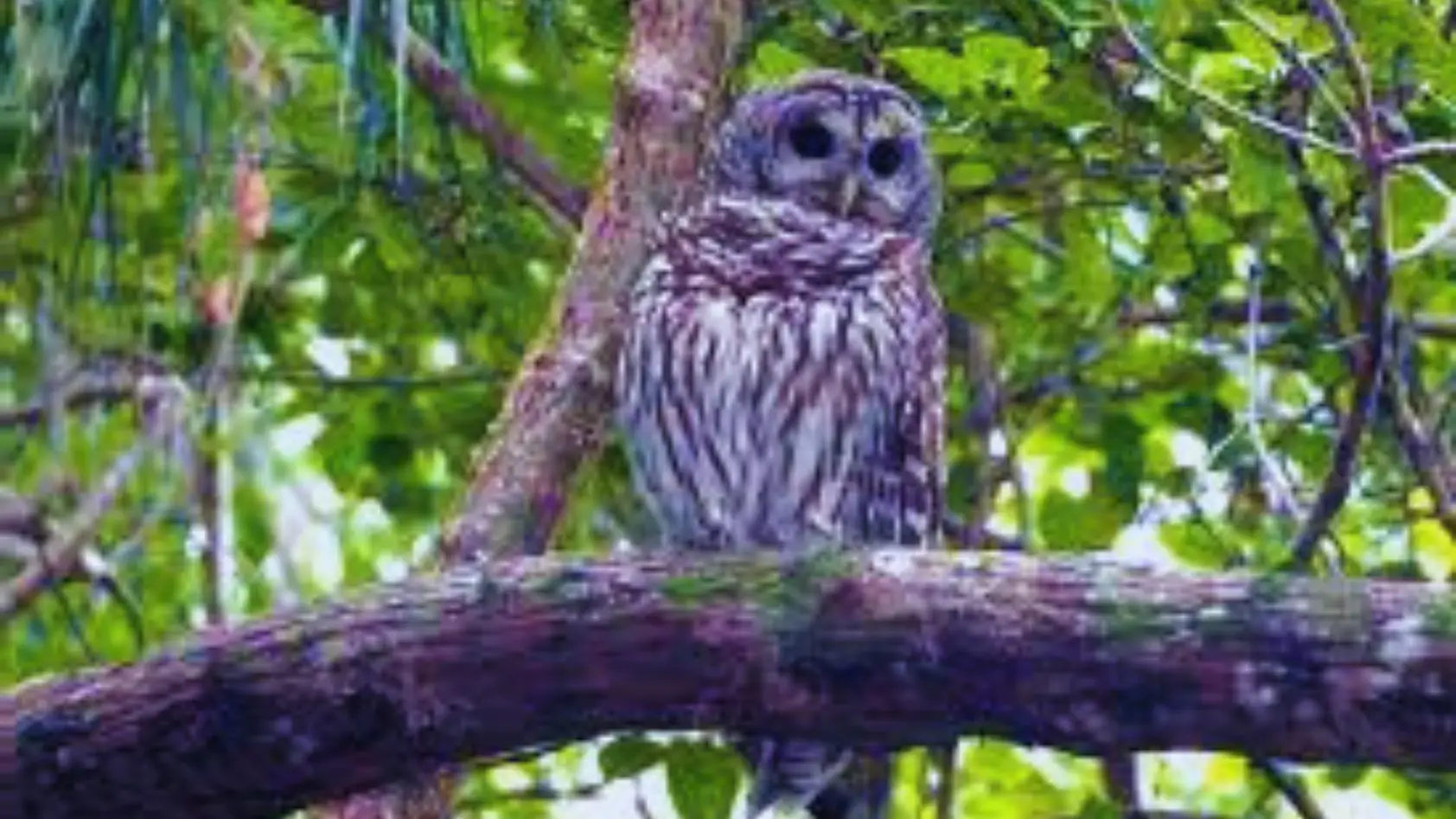If you’re interested in learning about the fascinating owls in Massachusetts, you’re in the right place. With various owl species in the state and many opportunities for sightings, Massachusetts is an excellent destination for owl enthusiasts.
In this guide, you’ll discover everything you need to know about owl species, habitats, behavior, and conservation in Massachusetts. Whether you’re a birdwatching enthusiast or simply curious about the nocturnal creatures that call Massachusetts home, this guide has got you covered.
Key Takeaways:
- Massachusetts is home to various owl species, each with unique physical characteristics and preferred habitats.
- Opportunities for owl sightings in Massachusetts are plentiful, and some of the best places to spot them are at specific parks and wildlife sanctuaries.
- Owl conservation efforts in Massachusetts are aimed at protecting habitats and promoting the long-term survival of owl species in the state.
Native Owl Species in Massachusetts
If you’re interested in learning about the different owl species that call Massachusetts home, you’re in luck. The state boasts a diverse population of native owl species with unique physical characteristics, behaviors, and preferred habitats. Here are two of the most commonly found owl species in Massachusetts:
| Species | Physical Characteristics | Behavior and Habitat |
|---|---|---|
| Eastern Screech-Owl | Small, with tufted ears and yellow eyes. Available in both red and grey color morphs. | Nocturnal and primarily active at dawn and dusk. Prefers wooded areas with open fields or wetland areas nearby for hunting small mammals, birds, and insects. Also known to use bird boxes as nesting sites. |
| Barred Owl | Medium-sized with a round head and dark eyes. Identified by its distinctive “Who cooks for you? Who cooks for you all?” call. | Nocturnal and active at night. Prefers large, mature forests with dense canopies and water sources nearby for hunting small mammals and birds. Known to use tree cavities as nesting sites. |
Other native owl species in Massachusetts include the Great Horned Owl, Northern Saw-whet Owl, and Short-eared Owl. Each species has unique characteristics and behaviors that make them fascinating to observe in their natural habitats.
Owl Sightings in Massachusetts
If you’re eager to catch a glimpse of owls in their natural habitats, Massachusetts offers several opportunities to do so. These fascinating creatures can be found in a variety of environments across the state, including forests, wetlands, and grasslands.
Some of the most popular areas for owl sightings in Massachusetts include:
- The Mount Auburn Cemetery in Cambridge
- The Blue Hills Reservation in Milton
- The Quabbin Reservoir in Belchertown
- The Ipswich River Wildlife Sanctuary in Topsfield
To increase your chances of spotting owls, it’s best to venture out during their most active hours – usually at dawn or dusk. Bring along a pair of binoculars, and be sure to move quietly and slowly so as not to startle them.
Remember, owls are elusive creatures and spotting them in the wild can be challenging. However, by visiting the right areas and taking the proper precautions, you may be able to witness these remarkable birds in their natural habitats.
Massachusetts Owl Population

If you’re interested in learning about the owl population in Massachusetts, you’ll be pleased to know that the state has a healthy owl population! While there have been some fluctuations in numbers over the years, the overall population of native owl species has remained relatively stable.
One of the biggest factors influencing the size of the owl population in Massachusetts is habitat loss. As more and more land is developed, owl habitats are destroyed, and these birds are forced to find new places to live. While many owl species are adaptable and can survive in a variety of habitats, others have more specific needs that are not always met in urban or suburban areas.
To help preserve owl habitats and maintain the owl population in Massachusetts, it’s important to take steps to protect natural areas and promote sustainable development. This can include supporting conservation organizations and land trusts, volunteering with local habitat restoration efforts, and advocating for policies that prioritize environmental protection and preservation.
Owl Conservation in Massachusetts
Owls are an important part of the ecosystem in Massachusetts, but their habitats face threats from human activity, climate change, and habitat loss. Conservation efforts are crucial to ensure the survival of owl populations in the state.
Organizations such as the Massachusetts Audubon Society and the Owl Research Institute are leading the way in protecting owl habitats and promoting conservation awareness. The Massachusetts Audubon Society manages 38 wildlife sanctuaries, including those dedicated to protecting owl populations and their habitats. The Owl Research Institute focuses on researching and educating the public about owl conservation.
Habitat Restoration
One of the primary methods of owl conservation is habitat restoration. This involves restoring and maintaining habitats to their natural state, allowing ecosystems to thrive and providing suitable homes for owl populations. Efforts to maintain and restore habitats include controlling invasive species, managing forests to ensure proper light levels, and restoring wetlands to support prey populations.
Educational Programs
Educational programs are another important aspect of owl conservation. These programs aim to raise awareness about the importance of owl habitats and the threats they face. They also provide information on how individuals can take action to support conservation efforts. The Massachusetts Audubon Society offers a variety of educational programs, including workshops, field trips, and citizen science programs.
Other Initiatives
Other initiatives aimed at owl conservation include monitoring owl populations, protecting nesting sites, and working with landowners to promote owl-friendly habitats on private land. These efforts are critical to maintaining healthy and sustainable owl populations in Massachusetts.
By supporting conservation efforts and spreading awareness about the importance of owl habitats, we can help ensure the long-term survival of these magnificent birds in Massachusetts.
Best Places to Spot Owls in Massachusetts
If you’re looking to catch a glimpse of one of the many owl species native to Massachusetts, there are a few places where your chances are especially high. Here are some of the best spots to go:
| Location | Owls you may spot |
|---|---|
| Mount Auburn Cemetery, Cambridge | Eastern screech-owls, great horned owls, barred owls |
| Wachusett Mountain State Reservation, Princeton | Barred owls, saw-whet owls, long-eared owls, great horned owls |
| Hawley State Forest, Charlemont | Great gray owls, barred owls, northern saw-whet owls |
| Parker River National Wildlife Refuge, Newburyport | Short-eared owls, snowy owls, northern saw-whet owls, great horned owls, barred owls |
While these locations are prime spots for owl sightings, it’s important to remember to be respectful of the owls and their habitats. Keep a safe distance, do not disturb nesting sites or feeding areas, and avoid using flash photography.
Owl Behavior in Massachusetts
If you’re lucky enough to spot an owl in Massachusetts, it’s important to understand their behavior in order to fully appreciate their incredible capabilities. Here are some fascinating behaviors exhibited by owls in the state:
- Hunting Techniques: Owls make use of their incredible hearing and vision to locate prey in the dark. They are skilled hunters, capable of capturing prey in complete silence.
- Mating Rituals: Male owls will often woo potential mates with elaborate displays of their hunting prowess. Once a mate is chosen, the pair will bond for life and raise their young together.
- Nesting Habits: Owls typically nest in large trees or rocky outcroppings. They do not build nests, but rather find natural crevices or cavities in which to lay their eggs.
- Communication Methods: Owls are known for their distinctive calls, which can vary greatly between species. They use these calls to communicate with potential mates, establish territory, and locate one another in the dark.
Observing these behaviors can be a truly incredible experience. But it’s important to remember to always respect the owl’s space and avoid disturbing them in any way.
Owl Habitat in Massachusetts

Owls in Massachusetts can be found in a variety of habitats, ranging from forests and woodlands to wetlands and grasslands. While different owl species have their own specific preferences, there are a few characteristics that are generally important for their habitat.
One important factor is the availability of suitable nesting sites. This can include tree cavities, old and abandoned buildings, or artificial nest boxes. Owls also require access to open areas for hunting and foraging, as well as nearby water sources for drinking and bathing.
Forests and woodlands are particularly important for several species of owls, including the Eastern Screech Owl, Barred Owl, and Great Horned Owl. These habitats provide ample shelter, nesting sites, and a diverse range of prey species.
Grasslands and agricultural fields are important for species such as the Short-eared Owl and Northern Harrier, which hunt small mammals and birds that inhabit these areas. Wetlands, such as marshes and swamps, provide important habitat for the rare and threatened Barn Owl.
It is important to note that many of these habitats have been altered or destroyed by human activities, such as logging and urbanization. As a result, efforts to preserve and restore owl habitats are crucial to ensure the long-term survival of these magnificent birds in Massachusetts.
Owl Research in Massachusetts
Owls have long been a subject of study and fascination for researchers in Massachusetts. In recent years, advances in technology have made it possible to learn more about these elusive birds than ever before.
One area of research that has received significant attention is the study of owl vocalizations. By recording and analyzing the sounds made by different owl species, researchers can identify and track individual birds, as well as gain insights into their behavior and communication patterns.
| Research Topic | Methodology | Findings |
|---|---|---|
| Migration patterns | Capturing and tagging owls | Some species of owls in Massachusetts migrate to Canada during the winter months |
| Nesting behaviors | Observing and recording owl nests | Owls in Massachusetts typically mate for life and return to the same nesting sites year after year |
| Diet and hunting habits | Analyzing owl pellets and prey remains | Different species of owls in Massachusetts have unique hunting strategies and prey preferences |
Some researchers are also working to develop new technologies for tracking and monitoring owl populations. For example, GPS tracking devices can provide valuable information about owl movements and use of habitat, while thermal imaging cameras can help to identify and count individual birds.
Overall, research on owls in Massachusetts has provided valuable insights into these unique and important creatures. Through continued study and observation, we can work to better understand and protect owl populations in the state.
Owl Preservation Efforts in Massachusetts
Massachusetts is home to a diverse population of owl species, but their habitats are increasingly threatened by human activities, climate change, and other factors. As a result, many organizations and individuals are working hard to protect these remarkable creatures and ensure their long-term survival.
Habitat Restoration
One key preservation effort is habitat restoration. This involves creating and maintaining suitable habitats for owls by restoring or preserving natural areas such as forests, wetlands, and grasslands. Organizations like the Massachusetts Audubon Society and the MassWildlife Division work with volunteers and landowners to restore and expand owl habitats across the state.
Education Programs
Educational programs play an important role in owl preservation efforts. These programs are designed to increase public awareness about owl conservation, promote responsible behavior in owl habitat areas, and teach individuals how to identify and report owl sightings. Organizations like the Owl Research Institute and the Massachusetts Audubon Society offer a wide range of educational programs and resources for people of all ages.
Research and Monitoring
Ongoing research and monitoring are critical for understanding owl populations and tracking changes over time. Many organizations in Massachusetts conduct research on owl behavior, ecology, and habitat use. This information is used to inform conservation strategies and management practices, as well as to guide public education efforts.
Collaboration and Partnerships
Owl preservation efforts in Massachusetts rely on collaboration and partnerships between state agencies, conservation organizations, landowners, and volunteers. These partnerships allow for more effective conservation and management of owl habitats, as well as greater public engagement and support for conservation initiatives.
By working together to protect owl populations in Massachusetts, we can ensure the survival of these incredible creatures for generations to come.
Conclusion
Congratulations! You have now gained a better understanding of owls in Massachusetts. You have learned about the different native owl species, their habitats, their behavior, and where to find them in the state.
Remember, it is important to appreciate and protect these magnificent creatures. Their habitats are vulnerable to human activities, and their populations are threatened by pollution, deforestation, and climate change.
By supporting conservation efforts and spreading awareness about owl preservation, you can help ensure that future generations can continue to enjoy these incredible birds in the wild.
FAQs About Owls In Massachusetts
Q: What owl species are native to Massachusetts?
A: Massachusetts is home to a variety of owl species, including the Eastern Screech-Owl, Great Horned Owl, Barred Owl, and Northern Saw-whet Owl.
Q: Where are the best places to spot owls in Massachusetts?
A: Some of the best places to spot owls in Massachusetts include wildlife sanctuaries such as Ipswich River Wildlife Sanctuary and Wachusett Meadow Wildlife Sanctuary, as well as state parks like Mount Greylock State Reservation.
Q: How can I increase my chances of spotting owls in Massachusetts?
A: To increase your chances of spotting owls in Massachusetts, it is recommended to visit areas with suitable owl habitats, such as forests and wetlands, during dawn or dusk when owls are most active. It is also important to remain quiet and still, as owls are easily startled.
Q: What is the current owl population in Massachusetts?
A: The exact owl population in Massachusetts is difficult to determine, as it can fluctuate due to various factors such as habitat changes and environmental conditions. However, Massachusetts is known to have a healthy and diverse owl population.
Q: How can I contribute to owl conservation in Massachusetts?
A: You can contribute to owl conservation in Massachusetts by supporting organizations and initiatives dedicated to preserving owl habitats, volunteering for owl research projects, and spreading awareness about the importance of owl conservation.
Q: What are some interesting behaviors exhibited by owls in Massachusetts?
A: Owls in Massachusetts exhibit fascinating behaviors such as silent flight, unique hunting techniques, elaborate mating rituals, and complex communication methods through vocalizations and body postures.
Q: What types of habitats do owls prefer in Massachusetts?
A: Owls in Massachusetts prefer habitats such as forests, woodlands, wetlands, and open fields. These habitats provide them with suitable prey and nesting sites.
Q: What ongoing owl research is taking place in Massachusetts?
A: Researchers in Massachusetts are conducting studies on various aspects of owl behavior, habitat requirements, population dynamics, and the impacts of human activities on owl populations. These studies contribute to our understanding of owls and inform conservation efforts.
Q: What preservation efforts are being made to protect owls in Massachusetts?
A: Numerous preservation efforts are underway in Massachusetts to protect owls, including habitat restoration projects, educational programs, and advocacy for owl conservation. These efforts aim to ensure the long-term survival of owl species in the state.













